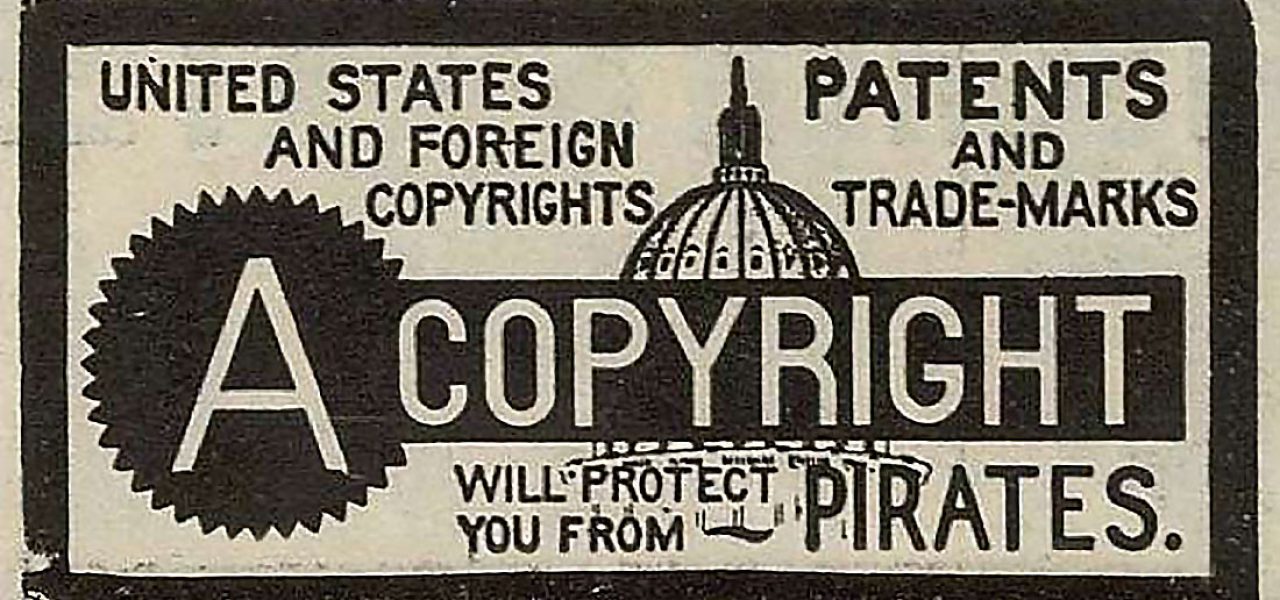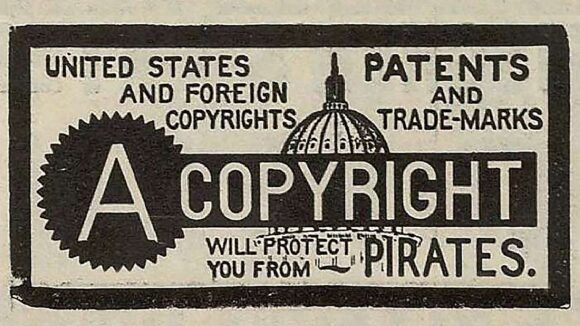

A Beginner’s Guide To Copyright Law For Artists
For artists, an understanding of how copyright works is especially important, since it governs the rights in and to his or her art.
Artists might have two questions when it comes to copyright: (1) how do I protect my own creative work, and (2) when am I able to use someone else’s work in my own? And those two questions represent the fundamental tension in the law between providing incentives to artists to create, and allowing works to fall into what is known as the public domain – that is, works unprotected by copyright and thus available for others to use as they wish.
What follows is a brief overview of the U.S. law that will hopefully give a basic sense of when a work is protected, how to protect it, and when a work can be used to create a new work of art.
What Can Be Copyrighted?
The rule is that, for a work to be copyrightable, it must be original — even a “modicum of creativity” will be enough – and it must be fixed “in a tangible medium of expression.” This simply means that the work must be somewhat original – that is, an independently created work that is not a copy of something else – and be expressed on some form of media, whether it be canvas, paper, phonorecords (CDs, LPs, MP3s, etc.), or even digital coding that can only be read by a machine.
The law lists eight categories of works that are protectable by copyright: literary works; musical works; dramatic works; pantomimes and choreographed works; pictorial, graphic and sculptural works; motion pictures and other audiovisual works; sound recordings; and architectural works. (Video games can qualify for protection as both literary works and as audiovisual works. The computer code generally crosses the “literary” threshold as specific characters in a specific sequence to be read by a machine – but of course, games use audio and visuals as much as any television or movie, so they would be protected under the audiovisual category, even if the law did not protect computer code.)
Importantly, facts and natural phenomena are not copyrightable – Einstein had no copyright in E=mc2 – nor are mere ideas or systems. Additionally, titles, slogans, and names cannot be copyrighted – they are considered “de minimis” works – too short to merit protection. Nor can titles generally be protected as trademarks, though there are some exceptions, such as a series of works like a daily newspaper or the James Bond films.
For a while, courts were not sure whether computer programs could by copyrighted. Some authorities considered computer programs simply mechanical transmissions of electronic signals to be read by machines, and not by people. But in a 1983 case involving the copying of Apple Computer’s operating system program by Franklin Computer Corp., the U.S Court of Appeals recognized the creativity in programming, and now both operating systems and application programs are protectable.
How Do I Get A Copyright?
A work is protected by copyright the moment the work is fixed in a tangible medium of expression – so a painting is protected the moment it’s painted, and a novel is protected the moment it’s written down on a laptop.
The artist does not need to register the work with the U.S. Copyright Office in order to obtain a copyright. This is true internationally, as well – at least for the 172 nations that have signed on to the Berne Convention. But Berne allows nations to make their own copyright rules, too – some nations, for example, do not provide an exception for “fair use.”
But of course, if you ever need to protect your copyright, you will need to prove when your work was copyrighted – and registering with the U.S. Copyright Office is convincing evidence of this. Worth noting, too, that judges and juries are more easily convinced about a work’s originality when, say, a new short video has been registered with the U.S. Copyright Office before uploading it to Vimeo. On top of that, the damages available to a prevailing party are greater when the work has been registered with the Copyright Office.
What Do I Do If Someone is Using My Work Without My Permission
Maybe you have a surreal animation that some EDM artist uses as a backdrop to their show. Or maybe your cute animal designs turn up on some retailer’s clothing.
It happens. What do you do?

Start off by asking yourself some questions. Is it possible for the other party to have even seen your work? Did your film play at a festival, or did you upload it onto a video sharing website. If they couldn’t have seen your work, they probably didn’t copy it – in copyright law, that’s known as “independent creation.” You both created works that were very similar, but one was not the copy of another.
But if the other party could have seen your work, and the works are identical, then you might do one of two things. First, you may just want to approach the other party, find out who they are, let them know you created the work they are using, and you would like them to stop infringing on your copyright. Maybe they will make you an offer to license the work, or maybe not. But a simple, non-hostile approach could be one way to go.
Second, you may also want to talk to a lawyer right away. Lawyers are often aware of pitfalls you may not even recognize, and their entire job is to protect you, their client. Try to find a lawyer who specializes in copyright law, or at least intellectual property.
Entertainment lawyers, too, can offer helpful advice. You will want a litigator – a trial lawyer – someone who is used to the workings of the court system. But if the other party is making an offer you like to use your work, and you want to make a deal, you will want a transactional attorney – one who negotiates deals.
Deals are better than trials, usually.
When Can I Use The Works of Other Artists in My Own Work?
There are a few situations where the law allows using the work of another artist in your own work.
1. The Public Domain:
First, the other artist’s work may be in the public domain. Whether a work is in the public domain depends on when it was first created.
Different copyright laws granted different terms of protection. For example, if the work was created prior to the 1909 Copyright Act, then the work would enter the public domain 42 years after its initial publication.
If the work was created after 1909 but before January 1, 1978, then originally, the work would enter the public domain after a maximum term of 56 years following its initial publication.
But the 1976 Copyright Act added 19 years to the term, so that the maximum term became 75 years from the date a work created prior to January 1, 1978 was first published, and for works created on or after January 1, 1978, copyright lasted for the life of the author plus fifty years.

In 1998, as the end of copyright protection loomed for such works as Mickey Mouse cartoons – Mickey first appearing publicly 70 years earlier, in 1928’s Steamboat Willie – major copyright-holding corporations like Disney and Time Warner lobbied Congress to extend term for yet 20 more years. Politicians changed the law so that for a work created prior to January 1, 1978, copyright protection would last for up to 95 years, and for works created after that date, for the life of the author plus 70 years.
The U.S. exports more copyrighted works than any other nation, [Leaffer, Understanding Copyright Law, 585, LexisNexis 2014) and so copyright can be a controversial topic, with some advocating for more exceptions, so that freer use can be made of existing works, while others seek to keep the works they own out of the public domain.
With the 20-year term of the 1998 extension ending in 2018, the question is whether Congress will again extend the term.
2. Fair Use
Another way to use the work of another is if your use of the work can be considered “fair use.” Such uses typically include criticism, news reporting, teaching, scholarship, and research.
Fair use is a defense to an infringement lawsuit, and in considering the defense, courts look at four criteria to determine whether the use qualifies as fair use: (1) whether the use is a commercial use or non-profit; (2) the nature of the copyrighted work; (3) the amount of the work used; and (4) any effect the use might have on the market value of the protected work. If a court finds for the defendant on all of these factors, then the use is fair, and there is no copyright infringement.
Fair use also encompasses parodies and other “transformative uses” – works that use a protected work in such a way that an entirely new work is created in the process. Parodies are given special attention, because an artist may take exception to his work being parodied – which might involve ridicule – and so refuse to license his work to a parodist.
Thus, only a finding of fair use would likely protect a parody from a ruling of infringement. Though a parody usually is a comment or critique of a prior work, in 2013, a federal court ruled that a work does not need to comment on the work being used to avoid infringement.

In that landmark 2013 ruling, the 2nd Circuit Court of Appeals found that the artist Richard Prince’s use of photographs taken by Peter Cariou, in a series of paintings titled “Canal Zone”, were transformative – that the value in the creation of new works overrode any protection to which Cariou’s work may have been entitled.
3. Other specific situations
In addition to the public domain and fair use, there are certain other uses of a protected work that nonetheless may escape liability for copyright infringement. In the 2004 case, Newton v. Diamond, composer (and Calarts music professor) James Newton sued the Beastie Boys for using a six-second, three-note segment from his composition, “Choir,” in the hip hop song, “Pass the Mic.” The federal court found that the use of Newton’s music was “de minimis,” that is, so minor as to avoid infringement.
Finally, one other protected use? Simply negotiate a license fee with the original artist, paying the artist a fee for the right to use the artist’s work in your own.
Copyright law is a highly complex field, concerned with the nature of creative works, and how best to advance our culture for the betterment of all. Hopefully, this general overview provides enough guidance to allow a reader to at least know what questions to ask, so that new works of art can be created for all to enjoy.
Other Resources
The above is intended only as a general introduction to copyright issues an artist may encounter, and is not intended as legal advice.
Below are links to additional helpful resources for those interest in copyright.
- The United States Copyright Office
- Berne Convention for the Protection of Literary and Artistic Works
- European Commission’s webpage on copyright
- Association of Research Libraries: A History of Copyright in the United States
- Copyright Clearance Center (provides licensing services for certain uses)
- World Intellectual Property Organization (WIPO)
- Electronic Frontier Foundation (organization devoted to protecting civil liberties in the digital world – which often involves copyright issues)
And to delve even further into copyright, Stanford Law School provides an exhaustive list of links to online copyright topics.

.png)